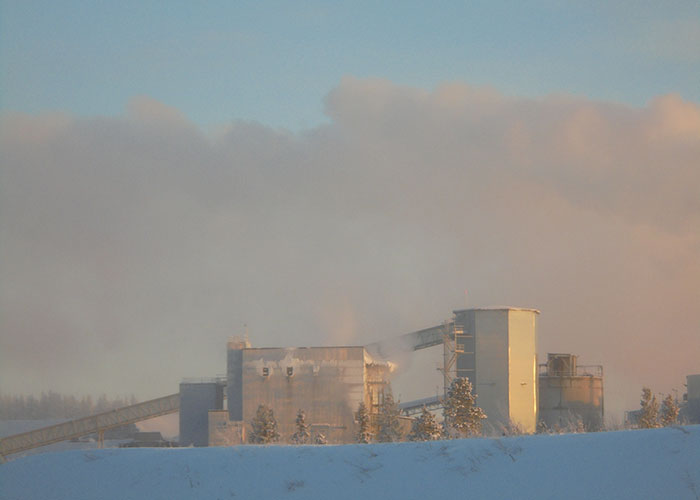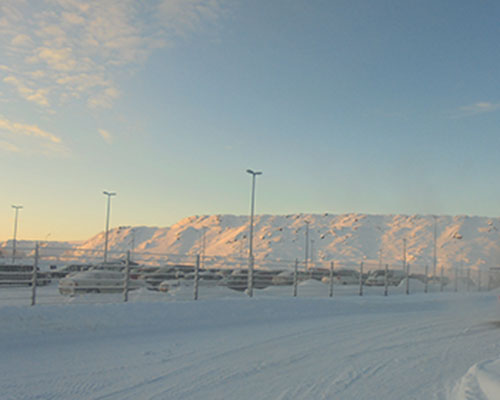NPE member and researcher Adrian Braun attended the NordMin PhD course “Gold from Bedrock to Bullion: Sustainable Mining” that was hosted by the Oulu Mining school.

In January 2016, NordMin – (Nordic network of Expertise for a sustainable Mining and Mineral Industry) invited for the second time PhD students to exchange knowledge and approaches about sustainable mining with representatives from industry and senior researchers. The host of the event was the Oulu Mining School, University of Oulu, Finland. On the contrary to the first PhD course in this series that took place at the Luleå University of Technology, Sweden in autumn 2014, where no specific metal was in focus, the organisers decided this time to underpin the role of Gold mining. Inferior attention during this course was as well on silver, copper and nickel which have naturally larger ore concentrations in the earth´s crust than gold and can also generate great fortunes for mining companies and the exploitation could cause also severe impacts on society and nature. Gold is a non-renewable resource and from this point of view it is difficult to introduce a topic such as sustainable gold mining. However, gold is also recyclable and the most gold ever mined is still somewhere around, for instance in jewellery and machines and this fact provides a strong argument for actors that propose there is a linkage of gold and sustainability.
Geologists, social scientists, chemists and economists had vivid discussions about traditional and novel practices of mining operations. The origin of the debate was in this regard usually from the geological and/or technical point of view and then many presenters drew the line to the realm of sustainability. Understanding the geological background of gold deposits is beneficial when the discussion is heading towards sustainable gold mining, as one gold deposit does not equate the other. Gold can be for instance “free” or the particles can be stored in the rock, what makes it refractory gold. The technical and monetary efforts to extract refractory gold are much more intense than it would be with free gold in the ground. By extracting the gold metal it is also of concern which other minerals, metals and substances are in the rock that is mined. Cyanide leaching is the dominant method for gold extraction due to its feasibility and cost effectiveness (Marsden & House 2006). Simultaneously, it is contested because cyanide is a toxic substance that could harm the natural environment and the health of workers and local communities nearby mine sites severely. From a sustainable point of view it would be favourable to find alternative leaching methods that can be applied at large-scales to decline negative environmental and social impacts. Alternative methods such as thiosulfate leaching, as it is considered as non-toxic could find more attention inside the mining sector in the future in the light of external pressure to improve the ecological footprint.

Apart from learning and discussing about gold mining operations the organisers had prepared a special event for the PhD candidates – a visit to the Kittilä gold mine in Finnish Lapland on a cold day (-38°C). This gold mine owned by the multinational enterprise Agnico Eagle invited us to the plant area and company representatives explained Agnico Eagle´s overall sustainability strategy and also some specifications of the local strategy that applies for the Kittilä municipality. As the tailings pond at the mine site had in September 2015 a leakage of waste water to the environment, it was interesting to hear the responses of the company towards this incident. They claimed that the leakage is under control today and under frequent surveillance. They also criticised media for inflating this incident in their opinion. The company does not know to this date what actually happened and they admitted that they perhaps never know exactly the cause for the leakage. At the end of the day was a 10-minute bus tour around the mine site, where the entrance to the underground mine and the old open-pits could be seen. Furthermore snow-covered tailings-ponds, waste rock heaps and the spot of the leakage were on the route.
Overall it was a good course, challenging for social scientists to follow the technical aspects, perhaps challenging for the geologists to follow the sustainability aspects, however, everybody could perceive mining from a not so familiar angle and consequently there was a lot to learn.
Text and photos: Adrian Braun
References:
Marsden, J.O. & House C.I., (2006). The chemistry of Gold. 2nd Edition Littleton, CO: Society for Mining, Metallurgy and Exploration.